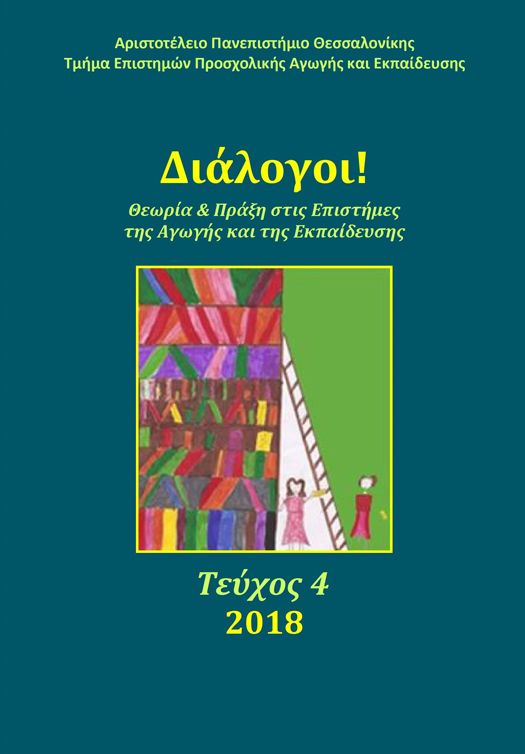Πλαγιαρισμός στις μεταπτυχιακές εργασίες των φοιτητών/τριών: Διερευνώντας το φαινόμενο

Περίληψη
Εισαγωγή: Η διάδοση του πλαγιαρισμού αποτελεί ένα θέμα με διεθνές ερευνητικό ενδιαφέρον. Στο πλαίσιο αυτό έχουν διερευνηθεί (μερικώς) η έκταση και οι μορφές του πλαγιαρισμού στο φοιτητικό πληθυσμό. Ωστόσο, από την ανασκόπηση της σχετικής βιβλιογραφίας, διαπιστώθηκε ότι το συγκεκριμένο ζήτημα δεν έχει ερευνηθεί σε σημαντικό βαθμό στην ελληνική ακαδημαϊκή κοινότητα παρά τα αναδυόμενα ανά διαστήματα περιστατικά, καθιστώντας έτσι αναγκαία τη διεξαγωγή της παρούσας έρευνας.
Σκοπός της έρευνας: Με την παρούσα έρευνα επιδιώκεται η διερεύνηση της διάδοσης και των μορφών του πλαγιαρισμού σε μεταπτυχιακούς φοιτητές.
Δειγματοληπτικός σχεδιασμός: Το δείγμα της έρευνας αποτελείται από 155 μεταπτυχιακές διατριβές και 8 αποφοίτους Προγράμματος Μεταπτυχιακών Σπουδών (ΠΜΣ) σε κάποιο ελληνικό Πανεπιστήμιο. Αξιοποιήθηκε το λογισμικό ανίχνευσης πλαγιαρισμού Turnitin για την εξέταση των διατριβών και η ημιδομημένη συνέντευξη με τους αποφοίτους του ΠΜΣ για τη διερεύνηση του φαινομένου.
Ευρήματα: Διαπιστώθηκε ότι οι μεταπτυχιακοί φοιτητές ολισθαίνουν σε πρακτικές πλαγιαρισμού μέσω αυτολεξεί αντιγραφών, ανεπαρκών παραφράσεων και λανθασμένων ενδοκειμενικών αναφορών και παραπομπών ή/και επιμέρους ειδικών περιπτώσεων πλαγιαρισμού.
Συμπεράσματα- Προτάσεις: Προτείνεται η επέκταση της διερεύνησης του θέματος (πλαγιαρισμός στην τριτοβάθμια εκπαίδευση) τόσο στους φοιτητές όσο και στο ακαδημαϊκό προσωπικό, για την αναγνώριση και πρόληψη σχετικών πρακτικών στο πλαίσιο της διασφάλισης της ποιότητας στην τριτοβάθμια εκπαίδευση.
Λεπτομέρειες άρθρου
- Πώς να δημιουργήσετε Αναφορές
-
Καρασαλίδης Θ., & Εμβαλωτής Α. (2018). Πλαγιαρισμός στις μεταπτυχιακές εργασίες των φοιτητών/τριών: Διερευνώντας το φαινόμενο. Διάλογοι! Θεωρία και πράξη στις επιστήμες αγωγής και εκπαίδευσης, 4, 4–22. https://doi.org/10.12681/dial.16446
- Τεύχος
- Τόμ. 4 (2018)
- Ενότητα
- Επιστημονική Αρθογραφία

Αυτή η εργασία είναι αδειοδοτημένη υπό το CC Αναφορά Δημιουργού – Μη Εμπορική Χρήση – Παρόμοια Διανομή 4.0.
Οι συγγραφείς των άρθρων που δημοσιεύονται στο Διάλογοι! Θεωρία και Πράξη στις Επιστήμες Αγωγής και Εκπαίδευσης διατηρούν τα δικαιώματα πνευματικής ιδιοκτησίας επί των άρθρων τους, δίνοντας στο περιοδικό το δικαίωμα της πρώτης δημοσίευσης. Άρθρα που δημοσιεύονται στο Διάλογοι! Θεωρία και Πράξη στις Επιστήμες της Αγωγής και Εκπαίδευσης διατίθενται με άδεια Creative Commons 4.0 και σύμφωνα με την άδεια μπορούν να χρησιμοποιούνται ελεύθερα, με αναφορά στον/στη συγγραφέα και στην πρώτη δημοσίευση για μη κερδοσκοπικούς σκοπούς και με δικαίωμα τροποποίησης μόνον με παρόμοια διανομή (αν αναμείξετε, τροποποιήσετε, ή δημιουργήσετε πάνω στο υλικό, πρέπει να διανείμετε τις δικές σας συνεισφορές υπό την ίδια άδεια όπως και το πρωτότυπο).
To Τμήμα Επιστημών Προσχολικής Αγωγής και Εκπαίδευσης του Αριστοτέλειου Πανεπιστημίου Θεσσαλονίκης και το Εθνικό Κέντρο Τεκμηρίωσης διατηρούν το δικαίωμα να δημοσιεύουν, να αναπαραγάγουν, να παρουσιάζουν στο κοινό, να διανέμουν και να χρησιμοποιούν άρθρα που δημοσιεύονται στο Διάλογοι! Θεωρία και Πράξη στις Επιστήμες Αγωγής και Εκπαίδευσης σε οποιοδήποτε μέσο και μορφή είτε μεμονωμένα είτε ως μέρη συλλογικών έργων, για όλο το χρόνο διάρκειας προστασίας της πνευματικής ιδιοκτησίας και για όλες τις χώρες του κόσμου.
Αυτό περιλαμβάνει ενδεικτικά, και όχι αποκλειστικά, το δικαίωμα δημοσίευσης των άρθρων σε τεύχη του περιοδικού Διάλογοι! Θεωρία και Πράξη στις Επιστήμες Αγωγής και Εκπαίδευσης, αναπαραγωγής και διανομής μεμονωμένων αντιγράφων των άρθρων, αναπαραγωγής ολόκληρων των άρθρων σε άλλη έκδοση του Τμήματος Επιστημών Προσχολικής Αγωγής και Εκπαίδευσης του Αριστοτέλειου Πανεπιστημίου Θεσσαλονίκης και του Εθνικού Κέντρου Τεκμηρίωσης και αναπαραγωγής και διανομής των άρθρων ή περίληψης αυτών με χρήση πληροφορικού συστήματος αποθετηρίου.


